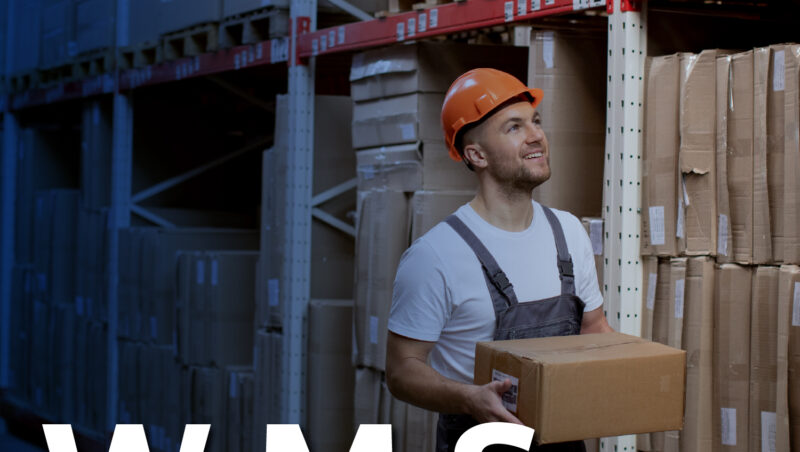OPTIMIZING THE FUTURE:
The Revolution of Automated Logistics
In today’s era, automation in logistics has become a fundamental pillar for companies aiming not only to stay ahead but also to significantly enhance their operations. This radical shi towards implementing automated transportation and storage systems in warehouses and distribution centers has been driven by the constant pursuit of maximizing performance, ensuring process safety, and optimizing logistics operations.
The rise of logistic automation
The growing popularity of automated systems in logistics is not merely a passing trend but a strategic response to the increasingly complex demands of the market. Companies are under constant pressure to improve efficiency, reduce costs, and streamline their logistics processes. Automation not only addresses these challenges but also paves the way for a more sustainable logistics future.
In this context, it is essential to analyze the reasons behind this surge in the adoption of automated logistics. A key factor is the need to increase operational efficiency. Automated systems enable the execution of repetitive tasks quickly and accurately, freeing up human resources for more strategic activities. Furthermore, error reduction and improved accuracy are additional advantages contributing to a significant increase in overall process efficiency.
Safety also plays a crucial role in this shi towards automation. Automated systems are designed to minimize risks and ensure the safety of workers in logistics environments. From handling goods to internal transportation, automation reduces exposure to hazardous situations, thus decreasing workplace accidents and improving working conditions.
Technologies setting the pace
 The future of automated logistics is marked by technological advancements that are transforming the way supply chains are managed. One of the most promising technologies is Artificial Intelligence (AI). AI systems can analyze real-time data, predict trends, and make autonomous decisions, enhancing decision-making in the supply chain and optimizing transportation routes.
The future of automated logistics is marked by technological advancements that are transforming the way supply chains are managed. One of the most promising technologies is Artificial Intelligence (AI). AI systems can analyze real-time data, predict trends, and make autonomous decisions, enhancing decision-making in the supply chain and optimizing transportation routes.
Another key technology is advanced robotics. Autonomous and collaborative robots can perform tasks ranging from product picking to inventory management, significantly contributing to operational efficiency. Drones are also emerging as a valuable tool for product delivery in large warehouses, providing speed and flexibility in distribution.
The Internet of Things (IoT) is another trend playing a fundamental role in automated logistics. The ability to connect devices and sensors in real time allows precise monitoring of supply quantity. From storage temperature to product location, IoT provides crucial data for more informed and efficient decision-making.
Common Solutions in Automated Logistics

Within the spectrum of automated logistics, several solutions have become commonplace to address critical supply chain processes.

1. Automated Storage Systems:
Automated shelving systems, along with automated picking robots, allow for efficient space management and quick product retrieval. These systems ensure a constant flow of products to order preparation areas, improving speed and accuracy in operations.

2. Autonomous Transport:
Autonomous vehicles, both land and air-based, are revolutionizing internal and external transportation in warehouses and distribution centers. The ability to navigate autonomously and avoid obstacles enhances efficiency in goods delivery and collection.

3. Collaborative Robotics:
The implementation of collaborative robots, also known as cobots, allows for safe interaction between humans and machines. These robots can assist in handling, packaging, and transportation tasks, working alongside human staff to improve productivity.

4. Logistics Management Software:
Advanced software solutions play a crucial role in logistic automation. Warehouse Management Systems (WMS) and Supply Chain Execution Systems (SCE) efficiently coordinate all operations, from product reception to final delivery, ensuring seamless synergy between different technologies.
Navigating towards an automated future

Logistic automation is not just an additional improvement but a revolution redefining how companies manage their supply chains. The rise of this trend is driven by the need for efficiency, safety, and adaptability in an increasingly dynamic business world.
As technology continues to advance, companies that embrace and adapt to these emerging innovations will be better positioned to tackle future challenges.
“Latin America, a region traditionally not very close to automation, is beginning to become increasingly familiar with this type of investment. Countries like Brazil, Chile, or Mexico were probably the pioneers, but more and more countries are joining, motivated by factors such as staff turnover, labor costs, regulations, and market demands, among others.”
– Daniel Gallón, logistics expert.
In summary, logistic automation is not only a strategic choice but a necessity on the path to a more efficient and agile tomorrow. Those companies that fully embrace these solutions will be at the forefront of the logistics revolution, leading the way towards a future where efficiency and innovation are the norm.



